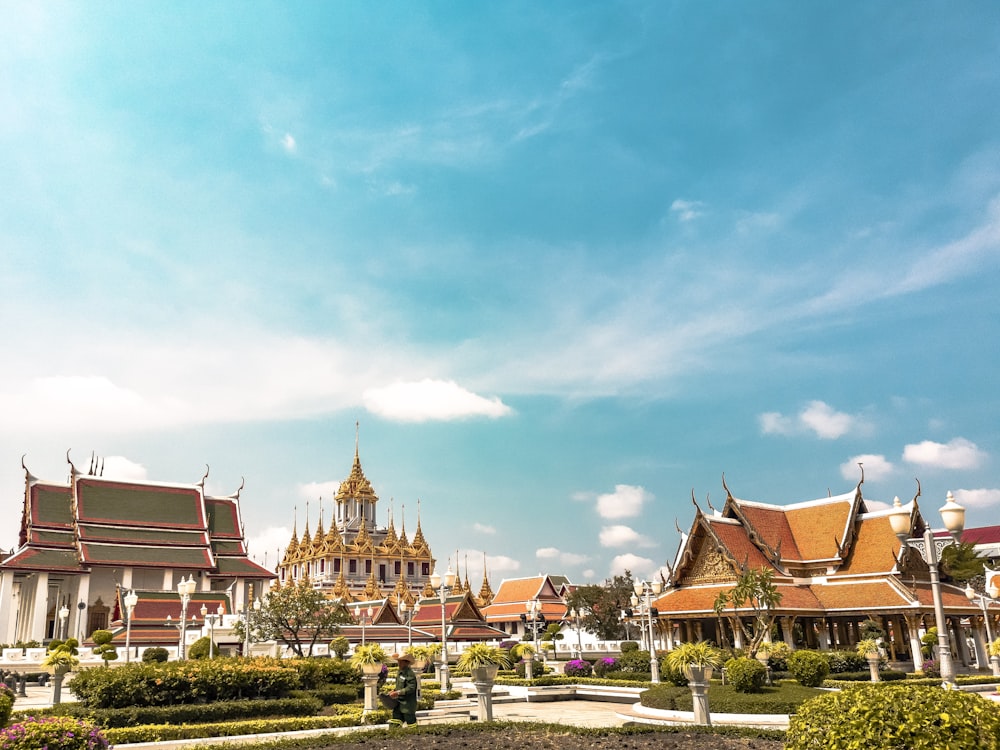
While Thailand is famous for its thriving tourism sector, the Kingdom's economy extends far beyond its beaches and temples. As the second-largest economy in Southeast Asia, Thailand has developed a diversified economic landscape that includes robust manufacturing, agriculture, technology, and service sectors that often go unnoticed by visitors.
This in-depth guide explores the key aspects of Thailand's economy beyond tourism, providing insights into the country's economic development, industrial strengths, and future challenges.
Thailand's Economic Development: The Path to an Upper-Middle Income Country
Thailand's economic transformation over the past half-century represents one of the most remarkable development success stories in Asia:
From Agrarian to Industrial Economy
- 1960s and 1970s: Agriculture-dominated economy with rice exports as the main foreign exchange earner
- 1980s and 1990s: Rapid industrialization and export-oriented growth policies led by the manufacturing sector
- 1997 Asian Financial Crisis: Severe economic setback that prompted major financial and corporate reforms
- 2000s onward: Recovery and diversification into high-value manufacturing and service sectors
This transition has helped Thailand achieve upper-middle-income status with a per capita income of approximately $7,200 USD. The country now aims to reach high-income status by addressing structural challenges in education, inequality, and productivity.
Manufacturing: Thailand's Economic Backbone
Manufacturing remains the most crucial sector of Thailand's economy beyond tourism, contributing approximately 27% to the country's GDP:
Automotive Industry
Thailand has established itself as the "Detroit of Asia" with a robust automotive manufacturing sector:
- Production capacity: Over 2 million vehicles annually, making it the largest automotive producer in Southeast Asia
- Major players: Toyota, Honda, Mitsubishi, Ford, and BMW have large production facilities
- Supply chain: Over 2,000 auto parts manufacturers create a complete industrial ecosystem
- Exports: Vehicles and parts are exported to over 100 countries globally
The automotive sector employs over 850,000 people and has expanded into electric vehicle (EV) production with government initiatives to establish Thailand as an EV manufacturing hub.
Electronics Manufacturing
Thailand is a major global producer of electronics components and devices:
- Hard disk drives: Thailand is the world's second-largest producer, with Western Digital and Seagate operating major facilities
- Integrated circuits: Significant production of semiconductors and microchips
- Consumer electronics: Production of cameras, refrigerators, air conditioners, and washing machines
- Industrial electronics: Manufacturing of advanced equipment components for global supply chains
The electronics sector accounts for approximately 10% of Thailand's total exports and employs hundreds of thousands of skilled workers across the country.
Economic Insight
Thailand's position in global manufacturing supply chains became especially evident during the COVID-19 pandemic when disruptions to Thai manufacturing had worldwide ripple effects, particularly in automotive and electronics industries. This highlighted both Thailand's importance in global trade and its vulnerability to external shocks.
Petrochemicals and Energy
Thailand has developed a sophisticated petrochemical industry centered around the Eastern Seaboard Industrial Zone:
- Oil refining: Several major refineries process imported crude oil
- Petrochemical production: Manufacturing of plastics, synthetic rubbers, and chemical compounds
- Energy: Natural gas from the Gulf of Thailand supplies approximately 60% of the country's electricity generation
- Renewable energy: Growing solar and biomass energy production
The petrochemical industry forms a critical part of Thailand's manufacturing base by providing raw materials for numerous downstream industries, from packaging to construction materials.
Agriculture: The Traditional Foundation
Despite industrialization, agriculture remains vital to Thailand's economy, providing livelihoods for about one-third of the population:
Rice Production
Thailand is one of the world's leading rice producers and exporters:
- Production: Approximately 20 million tons annually
- Varieties: World-famous jasmine rice (hom mali) commands premium prices in global markets
- Farming methods: Blend of traditional practices and mechanization
- Cultural significance: Rice farming remains central to Thai identity and cultural practices
Rice cultivation occupies over half of Thailand's arable land, with the central plains and northeastern region being the primary growing areas.
Other Agricultural Exports
Thailand's diverse agricultural sector produces a wide range of export crops:
- Rubber: Thailand is the world's largest natural rubber producer
- Cassava: Leading global exporter of tapioca products
- Tropical fruits: Major exporter of durian, mangosteen, longan, and pineapple
- Poultry: Significant producer and exporter of chicken products
- Seafood: Major producer of shrimp and processed seafood products
The agricultural sector's contribution to GDP has declined to about 8%, but it remains crucial for employment, food security, and export earnings.
Challenges in Agriculture
Thailand's agricultural sector faces several significant challenges:
- Aging farmer population with an average age over 55
- Water management issues, including recurring droughts and floods
- Land fragmentation creating inefficient plot sizes
- Price volatility affecting farmer incomes
The government's Thailand 4.0 initiative includes plans to modernize agriculture through smart farming techniques, better water management, and higher-value crop development.
The Service Sector: Beyond Tourism
While international tourism dominates discussions of Thailand's service economy, numerous other service industries contribute significantly to GDP:
Financial Services
Thailand has developed a sophisticated financial services sector:
- Banking system: Dominated by a handful of large commercial banks with extensive branch networks
- Stock Exchange of Thailand (SET): One of Southeast Asia's most active equity markets
- Fintech: Rapidly developing digital payment and banking services
- Insurance: Growing life and non-life insurance markets
Bangkok aspires to become a regional financial hub, though it faces competition from Singapore and Hong Kong.
Healthcare Services
Thailand has developed world-class healthcare facilities:
- Public health system: Universal healthcare coverage for Thai citizens
- Private hospitals: Internationally accredited facilities with advanced medical technology
- Pharmaceutical production: Growing domestic drug manufacturing industry
- Medical research: Increasing focus on biotechnology and medical innovations
The healthcare sector employs over 280,000 medical professionals and generates significant economic activity beyond medical tourism.
Retail and E-commerce
Thailand's retail landscape has evolved dramatically in recent decades:
- Modern retail: Shopping malls and hypermarkets are ubiquitous in urban areas
- E-commerce: Rapid growth with platforms like Shopee and Lazada dominating
- Convenience stores: Thailand has one of the world's highest densities of convenience stores
- Traditional markets: Still important for fresh food and daily essentials
The retail sector employs millions of workers and has proven relatively resilient during economic downturns.
Experience Thai Culture Beyond Tourist Areas
Want to explore Thailand's economic centers and understand the country beyond tourism hotspots? Our premium membership connects you with Thai partners who can show you aspects of Thai life most visitors never see.
Thailand's Eastern Economic Corridor (EEC)
The EEC represents Thailand's most ambitious economic development project in decades:
Strategic Development Zone
Covering three eastern provinces (Chonburi, Rayong, and Chachoengsao), the EEC aims to transform Thailand's industrial heartland:
- Investment target: Over $45 billion in public and private investment
- Infrastructure: High-speed rail, expanded deep-sea ports, upgraded airports
- Targeted industries: Next-generation automotive, smart electronics, medical and wellness tourism, agriculture and biotechnology, food processing, robotics, aviation, and logistics
The project aims to propel Thailand into high-income status by creating a hub for advanced industries and innovation.
Thailand 4.0 Initiative
The EEC is central to Thailand's economic transformation strategy known as Thailand 4.0:
- Shift from commodity production to innovation-driven economy
- Focus on high-value industries and services
- Development of digital infrastructure and smart cities
- Enhancement of human capital through education reform
This ambitious plan seeks to help Thailand escape the "middle-income trap" by moving up global value chains and developing knowledge-based industries.
Thailand's Digital Economy
Digital transformation is reshaping Thailand's economic landscape:
Tech Startups and Innovation
Thailand's startup ecosystem has grown significantly:
- Venture capital: Increasing investment in Thai tech startups
- Unicorns: Companies like Flash Express (logistics) and Bitkub (cryptocurrency exchange) have achieved billion-dollar valuations
- Startup hubs: Innovation centers and co-working spaces proliferating in Bangkok and other major cities
- Government support: Tax incentives and funding for tech startups
Sectors like fintech, e-commerce, logistics, and food delivery have seen particularly strong startup activity.
Digital Transformation of Traditional Industries
Beyond pure tech companies, traditional Thai businesses are embracing digital technologies:
- Banking: Mobile banking apps and digital payment systems are ubiquitous
- Retail: Omnichannel strategies combining physical stores with e-commerce
- Manufacturing: Implementation of Industry 4.0 technologies like IoT and AI
- Agriculture: Adoption of precision farming techniques and direct-to-consumer platforms
This digital transformation is driving productivity improvements and creating new business models across the economy.
Economic Challenges and Future Outlook
Despite its remarkable development, Thailand faces several structural economic challenges:
Aging Population
Thailand is aging faster than most developing countries:
- Demographic trends: One of the lowest fertility rates in Southeast Asia (1.5 children per woman)
- Aging workforce: By 2040, over a quarter of Thais will be over 65
- Labor shortages: Already emerging in key industries
- Social security pressure: Increasing burden on pension and healthcare systems
These demographic shifts will require significant policy adjustments, potentially including immigration reforms, automation, and enhanced social safety nets.
Middle-Income Trap
Thailand has struggled to advance from middle-income to high-income status:
- Productivity challenges: Growth in labor productivity has slowed
- Skills mismatch: Education system not fully aligned with economic needs
- Innovation gap: Relatively low R&D spending compared to developed economies
- Income inequality: Wide disparities between urban and rural areas
Overcoming these challenges will require significant investments in education, infrastructure, and technological capacity.
Environmental Sustainability
Economic development has created environmental pressures:
- Air pollution: Particularly in industrial areas and urban centers
- Water management: Challenges with both floods and droughts
- Deforestation: Despite improvement, forest loss continues in some regions
- Climate change vulnerability: Thailand's long coastline and agricultural sector are highly exposed to climate impacts
The Bio-Circular-Green (BCG) Economic Model has been adopted as national policy to address these challenges while maintaining economic growth.
Conclusion
Thailand's economy extends far beyond the beaches and temples that most visitors experience. With its diverse manufacturing base, agricultural expertise, growing service industries, and ambitious development plans, Thailand continues to evolve as one of Southeast Asia's most dynamic economies.
While significant challenges remain, Thailand's economic resilience and adaptability have repeatedly helped it navigate global economic shifts and domestic challenges. As the country pursues its Thailand 4.0 vision, it aims to build on its existing strengths while developing new capabilities in high-value industries and services.
Understanding this broader economic context provides valuable insights into contemporary Thai society, the forces shaping its development, and the opportunities and challenges that lie ahead as Thailand works to achieve high-income status in the coming decades.
